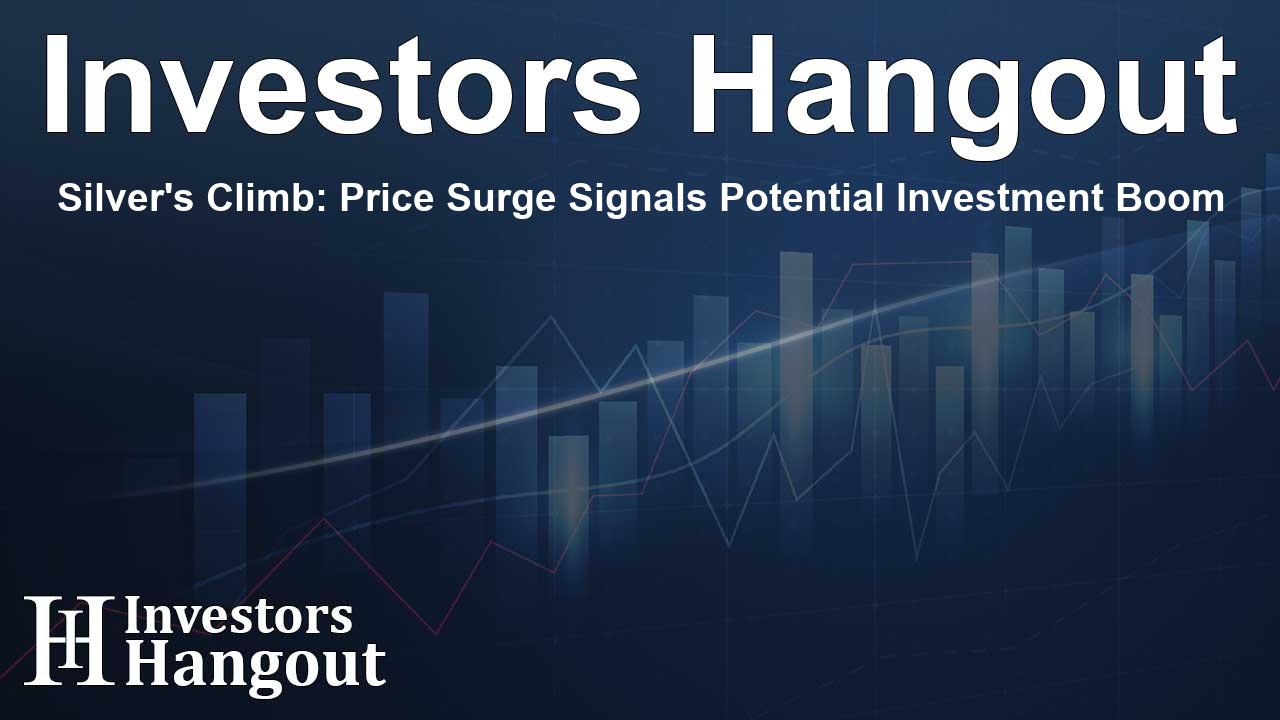Silver's Climb: Price Surge Signals Potential Investment Boom

Silver Prices Near Historic Peaks
Recently, silver prices reached impressive multi-year highs, flirting dangerously close to their previous record of $49.95 per ounce. This surge in value can be attributed to dwindling inventories and a palpable market squeeze, which have compelled investors to flock towards precious metals.
Current Market Dynamics
As trading activity unfolded, the front-month COMEX silver settled around $47.60 per ounce, marking a significant increase of 2.9% for the week and approximately 63.8% year-to-date, outstripping even gold's remarkable performance. The current conditions suggest that the commodity market is navigating into a new phase, with silver often taking the lead.
Industry Expert Insights
Commodity strategist Daniel Ghali from TD Securities expressed that we are witnessing what he dubbed the "#silversqueeze you can buy into." He pointed out that stockpiles of silver in the London Bullion Market Association vaults have reached critically low levels.
Supply Challenges and Demand Surge
In a recent conversation with Bloomberg, Ghali mentioned that, at the current rate of ETF inflows and industrial demand, there remain only around four months of readily available silver before supplies are exhausted. Their recent report highlighted that the lease rates for silver, indicating the cost of borrowing this precious metal, have surged to extreme levels, emphasizing the metal's scarcity.
Import Trends Impacting Supply
Moreover, heavy imports from India have doubled in recent months, heightening demand, while China's absence from trading has compounded inventory challenges. Ghali noted that for the first time in over a year, there appears to be a potential pressure release valve for the market, though he cautioned that overall market liquidity remains tenuous.
Market Indicators of Silver Shortage
The indicators of a silver squeeze are increasingly evident. The paper-to-physical silver ratio is estimated to be as high as 378:1, suggesting a substantial number of paper claims for each actual ounce available. This has driven physical premiums up at bullion dealers, coinciding with a global decline in stockpiles over the past five years.
Exciting Potential for Growth
Despite the impressive rise in silver prices, the current silver-to-gold ratio, nearing 82, remains elevated historically. This suggests there could be further room for substantial gains as silver catches up. Historically, during bullish market trends, this ratio has fallen below 60, indicating that silver may still have a way to go.
Historical Context for Current Prices
When evaluating spot prices, it's crucial to consider inflation adjustments for historical context. The peak silver price of $48.70 in 2011 translates to roughly $69 when adjusted for today's inflation. Furthermore, the 1980 high of $49.45, when adjusted, equates to about $192 in today's dollars.
Future Price Predictions
These historical calculations indicate that silver is currently trading nearly 30% below its inflation-adjusted peak from 2011 and over 75% below its 1980 equivalent. Given the rising lease rates and the tightening of inventories, a short-term technical target projecting silver prices at $75 per ounce appears plausible.
Investment Opportunities
For those eyeing investment avenues in silver, the iShares Silver Trust ETF (NYSE: SLV) has shown impressive growth, increasing by 61.60% year-to-date. Silver's upward momentum, driven by compelling fundamentals, suggests a lucrative opportunity for potential investors.
Frequently Asked Questions
What factors are driving the recent rise in silver prices?
Silver prices are climbing due to dwindling inventories, high demand, and a significant increase in both ETF inflows and industrial usage.
How does the current silver-to-gold ratio compare historically?
The silver-to-gold ratio is currently near 82, which is historically high and suggests the potential for future silver gains as it may compress towards lower levels seen in past bull markets.
Why are inventory levels critical for silver pricing?
Low inventory levels create a supply squeeze, which can drastically increase prices as demand surpasses availability, leading to market volatility.
What historical peaks should investors consider?
Investors should consider that silver, when adjusted for inflation, is still significantly below its historical peaks from 2011 and 1980.
How have imports affected the silver market?
Increased imports, particularly from India, have added pressure to the silver market, contributing to elevated prices amidst declining stockpiles globally.
About The Author
Contact Owen Jenkins privately here. Or send an email with ATTN: Owen Jenkins as the subject to contact@investorshangout.com.
About Investors Hangout
Investors Hangout is a leading online stock forum for financial discussion and learning, offering a wide range of free tools and resources. It draws in traders of all levels, who exchange market knowledge, investigate trading tactics, and keep an eye on industry developments in real time. Featuring financial articles, stock message boards, quotes, charts, company profiles, and live news updates. Through cooperative learning and a wealth of informational resources, it helps users from novices creating their first portfolios to experts honing their techniques. Join Investors Hangout today: https://investorshangout.com/
The content of this article is based on factual, publicly available information and does not represent legal, financial, or investment advice. Investors Hangout does not offer financial advice, and the author is not a licensed financial advisor. Consult a qualified advisor before making any financial or investment decisions based on this article. This article should not be considered advice to purchase, sell, or hold any securities or other investments. If any of the material provided here is inaccurate, please contact us for corrections.
